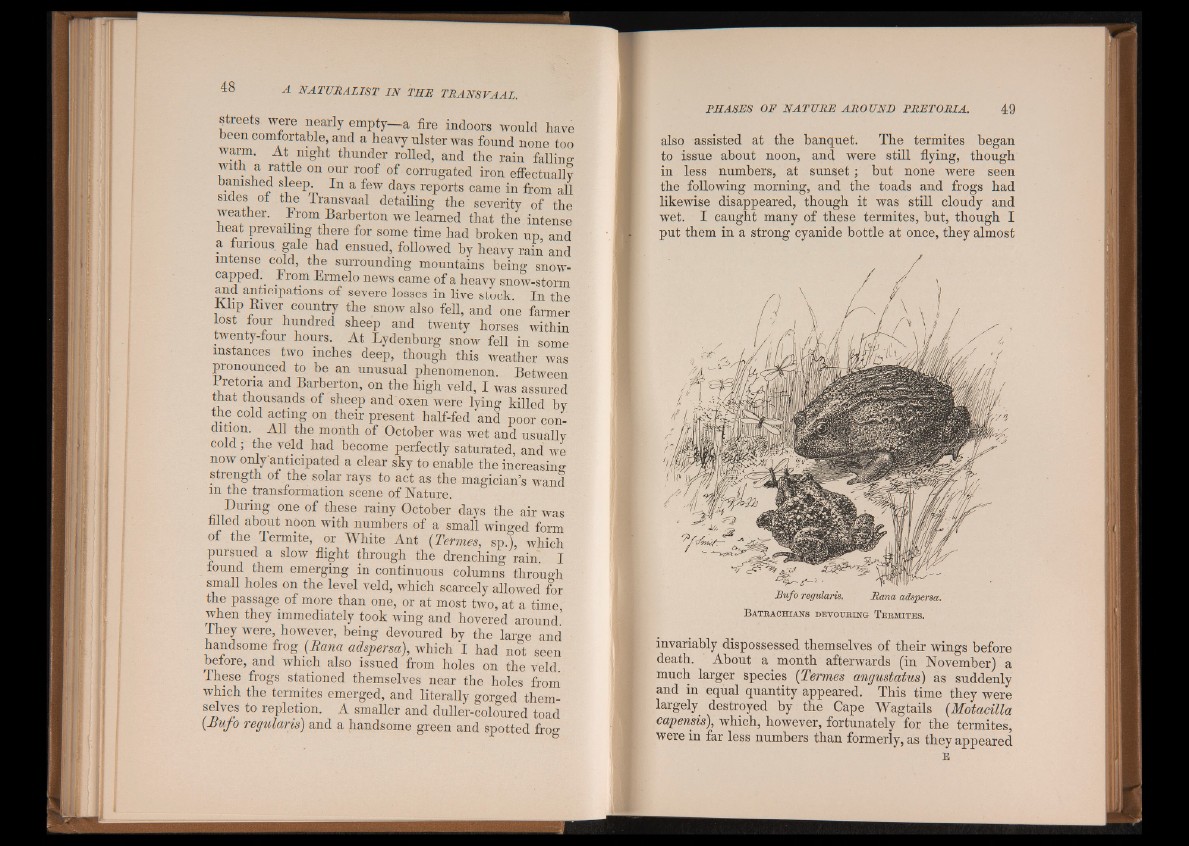
streets were nearly empty—a fire indoors would have
been comfortable, and a heavy ulster was found none too
warm. At night thunder rolled, and the rain falling
with a rattle on our roof of corrugated iron effectually
banished sleep In a few days reports came in from all
sides of the Transvaal detailing the severity of the
weather. From Barberton we learned that the intense
heat prevailing there for some time had broken up and
a furious, gale had ensued, followed by heavy rain and
intense cold, the surrounding mountains being snowcapped.
From Ermelo news came of a heavy snow-storm
Mid anticipations of severe losses in live stock. In the
Klip River country the snow also fell, and one farmer
lost four hundred sheep and twenty horses within
twenty-four hours. At Lydenburg snow fell in some
instances two inches deep, though this weather was
pronounced to be an unusual phenomenon. Between
and,Ear!?ei;t011’ on the veld, I was assured
tnat thousands of sheep and'oxen were lying killed by
the cold acting on their present half-fed and poor condition.
All the month of October was wet and usually
cold; the veld had become perfectly saturated, and we
now only-anticipated a clear sky to enable the increasing
strength of the solar rays to act as the magician’s wand
in the transformation scene of Nature.
°ne °f these rainy October days the air was
filled about noon with numbers of a small winged form
of the lermite, or White Ant (Termes, sp.), which
pursued a slow flight through the drenching rain. I
found them emerging in continuous columns through
small holes on the level veld, which scarcely allowed for
the passage of more than one, or at most two, at a time
when they immediately took wing and hovered around.’
They were, however, being devoured by the large and
handsome frog (Sana adspersa), which I had not seen
before, and which also issued from holes on the veld.
These frogs stationed themselves near the holes from
which the termites emerged, and literally gorged themselves
to repletion. A smaller and duller-coloured toad
(.Bufo regularis) and a handsome green and spotted frog
also assisted at the banquet. The termites began
to issue about noon, and were still flying, though
in less numbers, at sunset; but none were seen
the following morning, and the toads and frogs had
likewise disappeared, though it was still cloudy and
wet. I caught many of these termites, but, though I
put them in a strong cyanide bottle at once, they almost
Bufo regularis. Rana adspersa.
B atbachians devoubing Tebmite s.
invariably dispossessed themselves of their wings before
death. About a month afterwards (in November) a
much larger species (Termes angustatus) as suddenly
and in equal quantity appeared. This time they were
largely destroyed by the Cape Wagtails (Motacilla
capensis), which, however, fortunately for the termites,
were in far less numbers than formerly, as they appeared
E